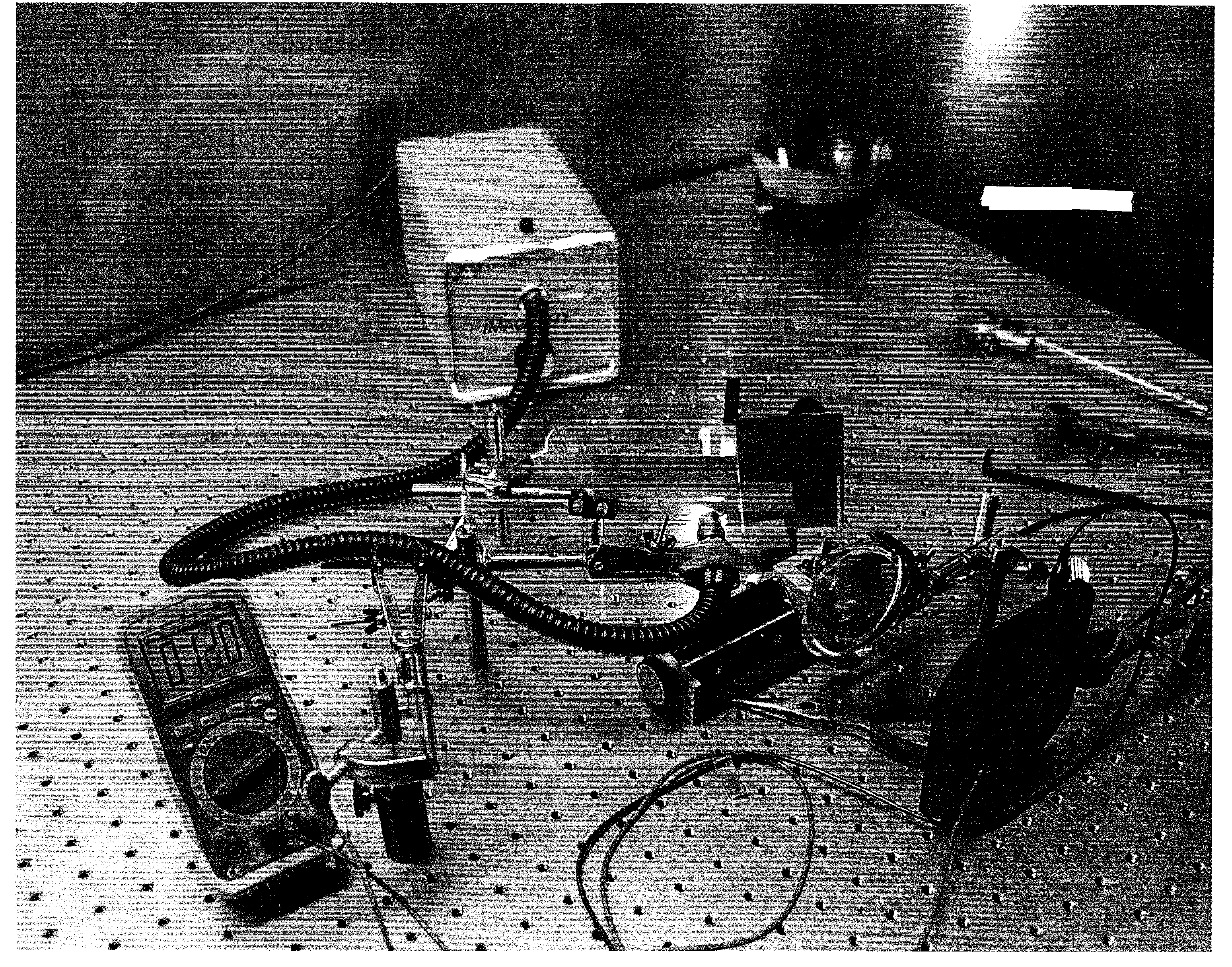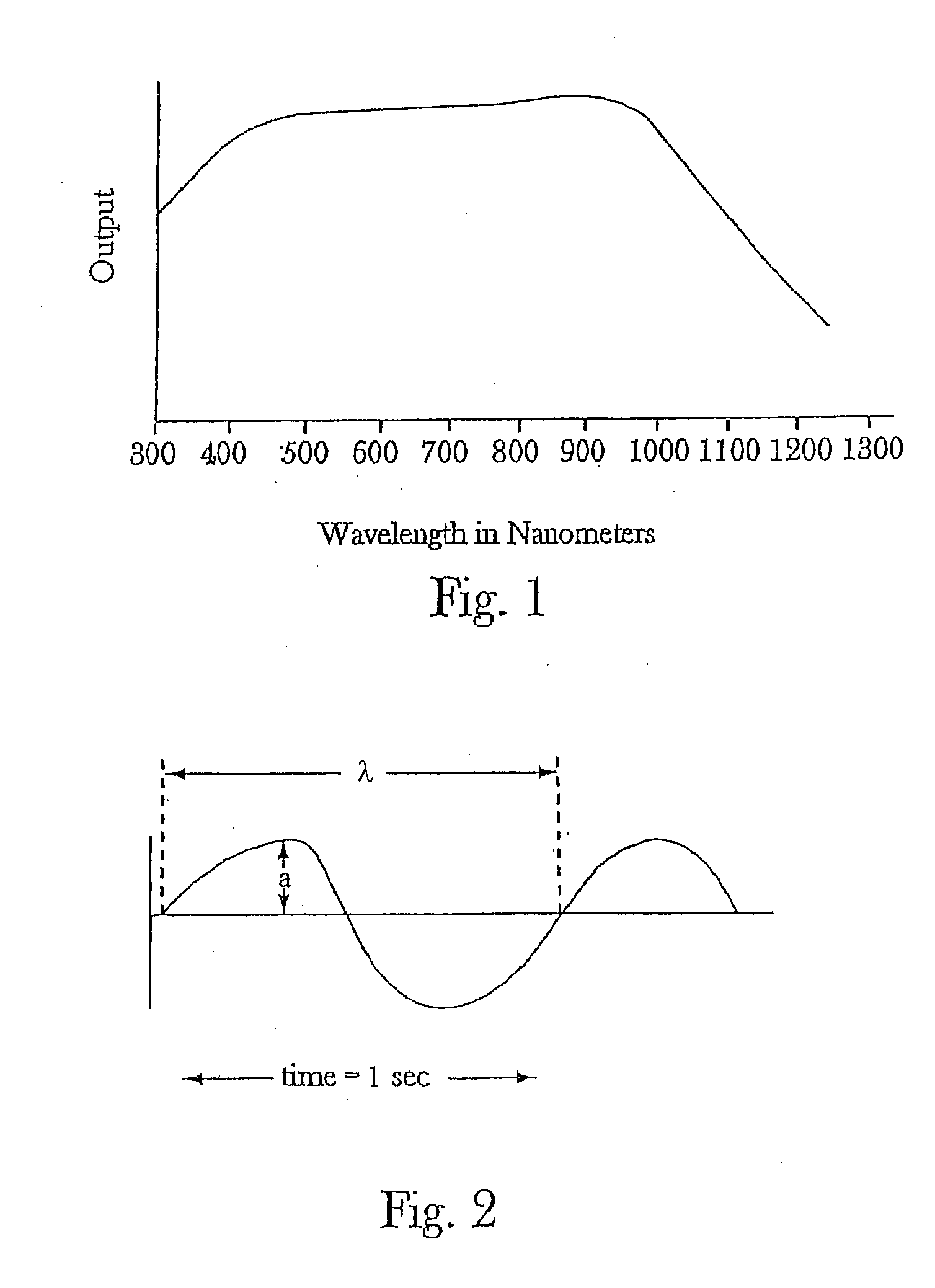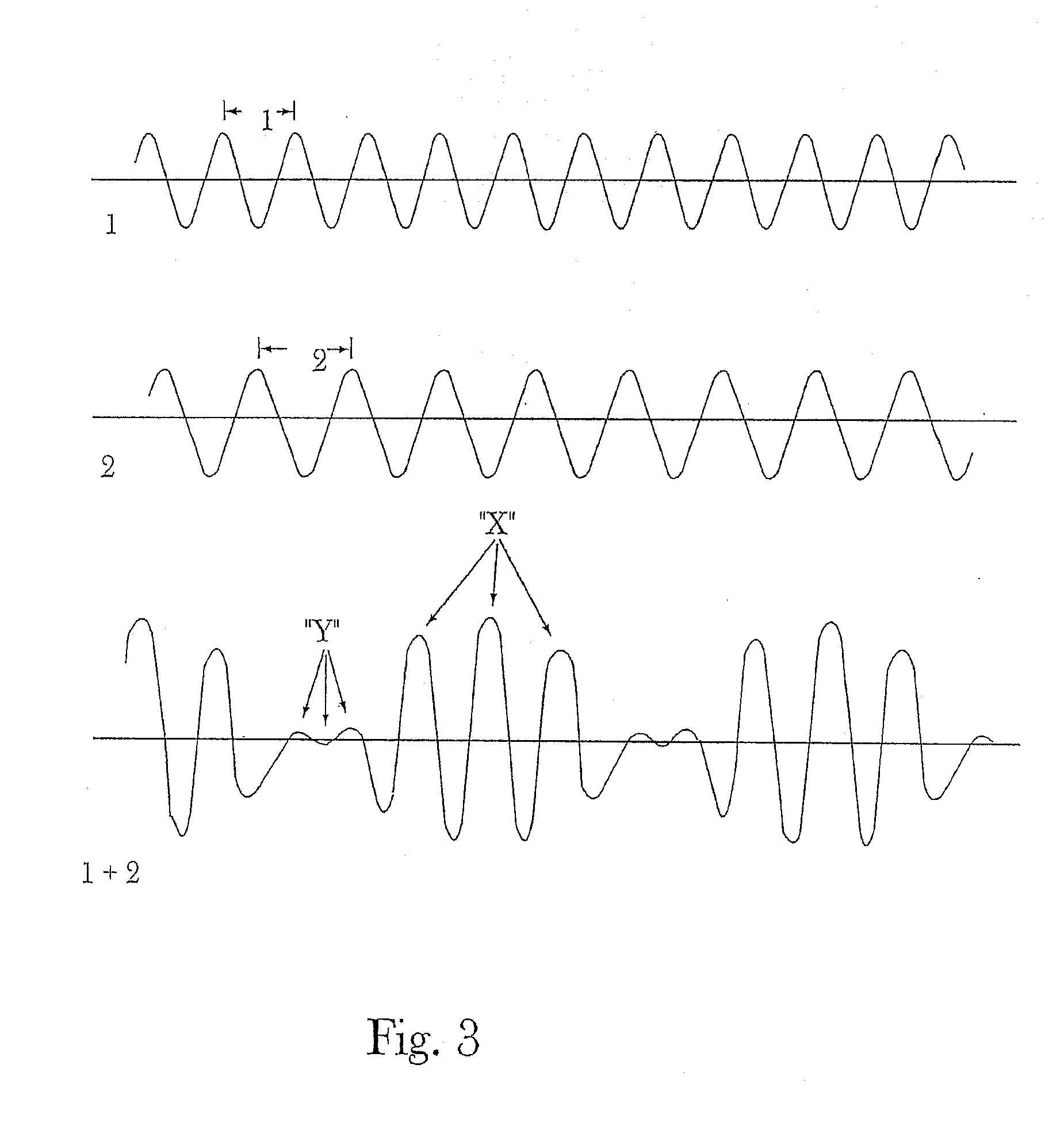High Efficiency Solar Cells
a solar cell, high-efficiency technology, applied in the direction of photovoltaic energy generation, basic electric elements, electrical equipment, etc., can solve the problems of reducing the efficiency of solar cells, crystalline silicon, etc., and reducing the cost of manufacturing semiconductor materials currently used for solar cells, so as to maximize the incidence and maximize the desired energy
- Summary
- Abstract
- Description
- Claims
- Application Information
AI Technical Summary
Benefits of technology
Problems solved by technology
Method used
Image
Examples
example 1
[0053]This Example demonstrates that the selected blocking of certain small groups or small portions of wavelengths or energies of visible light (e.g., blocking a portion of the photoreactive solar spectrum) can increase the output of a solar cell relative to unblocked visible light incident on the same solar cell. It should be understood that maximum output from solar cells will be achieved from blocking somewhat smaller and more numerous of wavelengths of the photoreactive portion of the visible spectrum but that this Example merely proves the general concept of the invention.
[0054]FIG. 5 shows a schematic of the experimental set-up used in accordance with this Example. A light source 10 known as an IMAGELITE™ from Stockard and Yale provided a suitable light spectrum that was transmitted through the flexible cable 11. The light emitted from the cable 11 was caused to be incident upon both of the separate slits 30 and 31 that were formed into a light opaque member 12. Each of the s...
PUM
 Login to View More
Login to View More Abstract
Description
Claims
Application Information
 Login to View More
Login to View More - R&D
- Intellectual Property
- Life Sciences
- Materials
- Tech Scout
- Unparalleled Data Quality
- Higher Quality Content
- 60% Fewer Hallucinations
Browse by: Latest US Patents, China's latest patents, Technical Efficacy Thesaurus, Application Domain, Technology Topic, Popular Technical Reports.
© 2025 PatSnap. All rights reserved.Legal|Privacy policy|Modern Slavery Act Transparency Statement|Sitemap|About US| Contact US: help@patsnap.com



